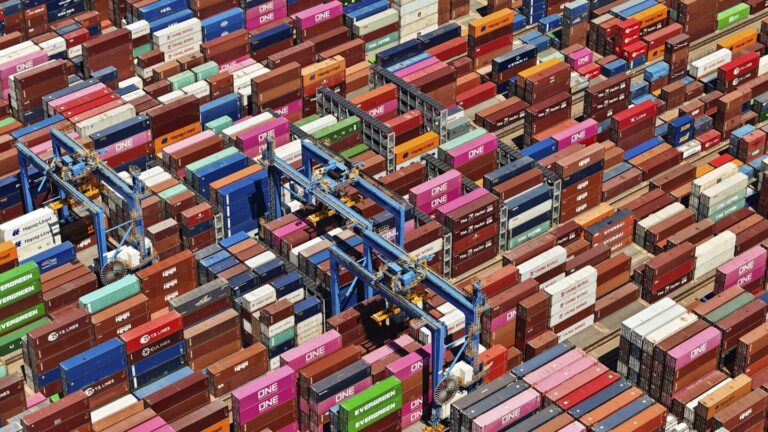HONG KONG (AP) — China’s exports grew at the fastest pace in more than a year in May despite trade tensions, but imports fell short of analysts’ expectations, customs data released Friday showed.
Exports rose 7.6% in May from a year earlier to $302.35 billion, the fastest growth since April 2023. Imports rose 1.8% to $219.73 billion, below expectations of an increase of about 4%.
The increase in exports comes in part from a lower base compared to the same period last year, when exports fell 7.5%.
Meanwhile, exports in April increased 1.5% compared to the same month last year, while imports increased 8.4%.
Strong exports helped China’s trade surplus widen to $82.62 billion from $72.35 billion in April.
The export increase comes as China faces escalating trade tensions with the United States and Europe, where the United States has imposed higher tariffs on Chinese-made electric vehicles and Europe is considering similar tariffs.
“Foreign tariffs are unlikely to immediately threaten exports, and may instead see a slight boost as companies accelerate shipments to get ahead of the tariffs,” Zhuchun Huang of Capital Economics said in a note.
Huang also said a decline in the real effective exchange rate would support exports.
“Imports were little changed last month but will probably pick up soon as higher government spending supports the import-intensive construction sector,” she said.
The 10-nation Association of Southeast Asian Nations (ASEAN) remains the largest destination for Chinese exports, with exports to ASEAN rising 9.7% year-on-year to $50.83 billion in the January-May period.
Exports to the United States rose just 0.2% from January to May compared with the same period last year, while exports to the European Union fell 3.9% from a year earlier.
The fastest growing exports from China are steel, automobiles, home appliances and ships. Automobiles saw the strongest growth, with China exporting 569,000 cars in the first five months of the year, up 26.8% from the same period last year.
China faces criticism from the United States and European Union for overproducing cheap electric vehicles and flooding overseas markets, and both have moved to impose tariffs on the cars. China, meanwhile, worries that tariffs on its electric vehicles will hurt exports at a time when domestic demand is weakening.
Lin Song of ING Economics said aggressive tariffs on China’s strategic exports and autos “could lead to retaliatory measures and escalating trade tensions.”
“We remain cautious on the trade outlook for the second half of the year and expect its contribution to growth to decline,” Song said in the note.
China’s factory activity slowed more than expected in May, according to an official survey released last week.
The manufacturing purchasing managers’ index released by the China Logistics Purchasing Federation, on a scale of 100, with 50 indicating the dividing line between expansion and contraction, fell to 49.5 from 50.4 in April.
China is struggling to recover from the COVID-19 pandemic as it struggles with sagging global demand after the Federal Reserve and other central banks raised interest rates to fight inflation. A slowdown in China’s real estate sector is also weighing on growth.
China has set a target of economic growth of about 5% this year, but economists say further policy support will be needed to reach that target.
___
This article corrects to say exports, not imports, rose 1.5% in April and clarifies that auto exports and regional percentages are for the first five months of the year.

